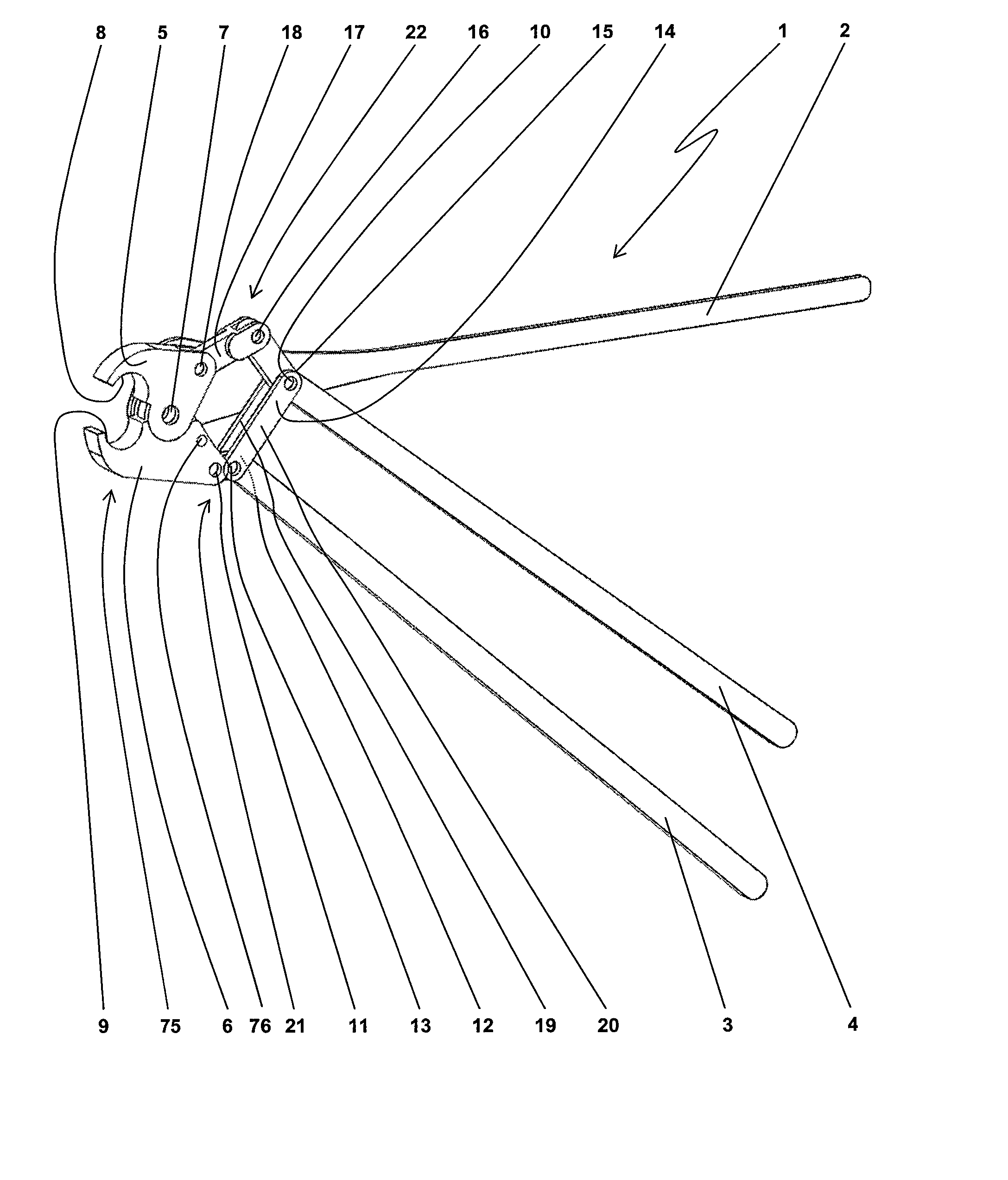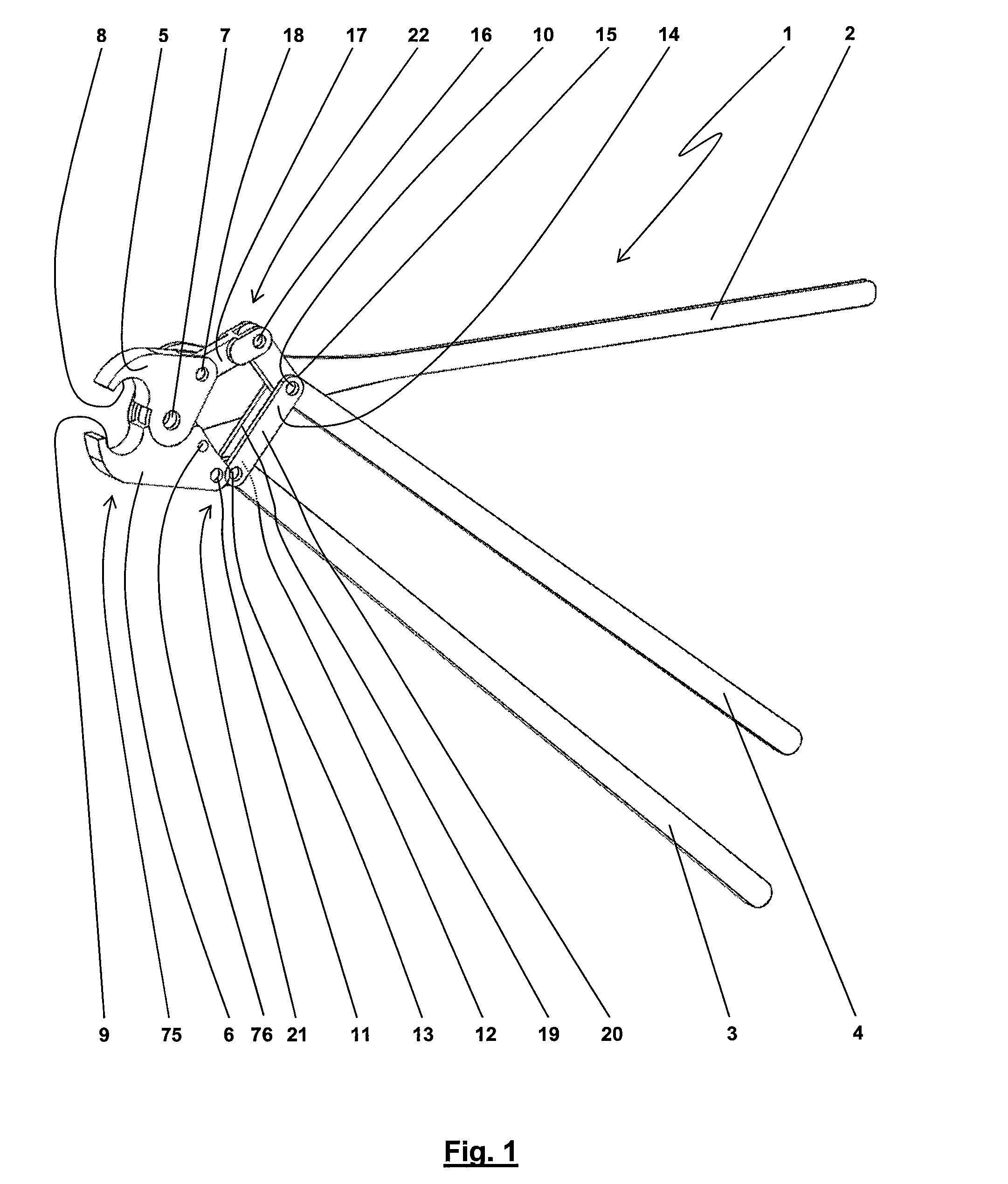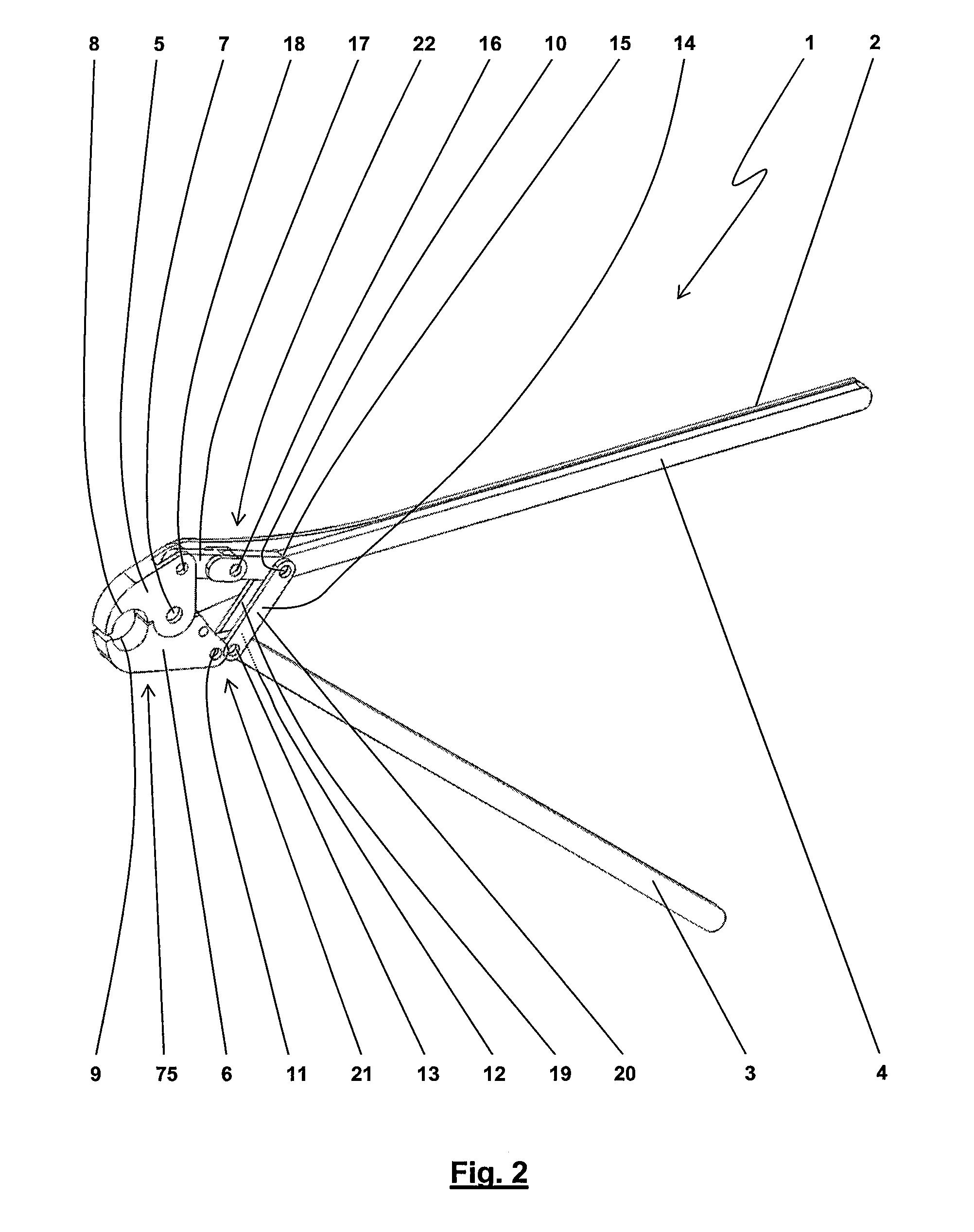Pliers for pressing work pieces
a technology for pliers and work pieces, applied in the direction of pliers, basic electric elements, electric devices, etc., can solve the problems of fixed dependency, user is only capable of applying limited force, and cannot move with fully opened hand levers, so as to achieve the effect of greater pressing for
- Summary
- Abstract
- Description
- Claims
- Application Information
AI Technical Summary
Benefits of technology
Problems solved by technology
Method used
Image
Examples
Embodiment Construction
[0090]Referring now in greater detail to the drawings, the figures illustrate exemplary embodiments of novel pressing pliers 1. For example, the pressing pliers 1 serve to deform mountings, tubes, electric contacts, cable lugs, fittings and other similar work pieces by pressing. Pressing is realized by manual actuation, meaning by a human user applying forces, without requiring electric, pneumatic or hydraulic power support. Preferably, the pressing pliers 1 have a structural length which is less than 800 mm, especially less than 700 mm or 600 mm. It is possible to attain pressing forces with the pressing pliers 1 being greater than 40,000 N, especially 50,000 N or 60,000 N by hand forces of a user which are less than 400 N. When using the pressing pliers 1 for pressing and deforming, respectively, a fitting, the fitting may have a diameter of more than 20 mm, especially more than 25 mm, 28 mm or 32 mm.
[0091]FIGS. 1 to 5 illustrate the pressing pliers 1 including three hand levers 2...
PUM
 Login to View More
Login to View More Abstract
Description
Claims
Application Information
 Login to View More
Login to View More - R&D
- Intellectual Property
- Life Sciences
- Materials
- Tech Scout
- Unparalleled Data Quality
- Higher Quality Content
- 60% Fewer Hallucinations
Browse by: Latest US Patents, China's latest patents, Technical Efficacy Thesaurus, Application Domain, Technology Topic, Popular Technical Reports.
© 2025 PatSnap. All rights reserved.Legal|Privacy policy|Modern Slavery Act Transparency Statement|Sitemap|About US| Contact US: help@patsnap.com



